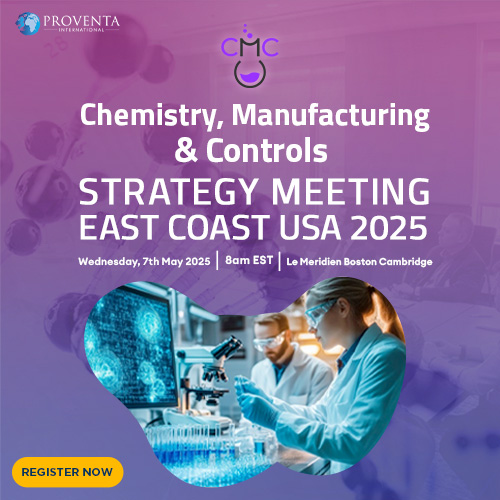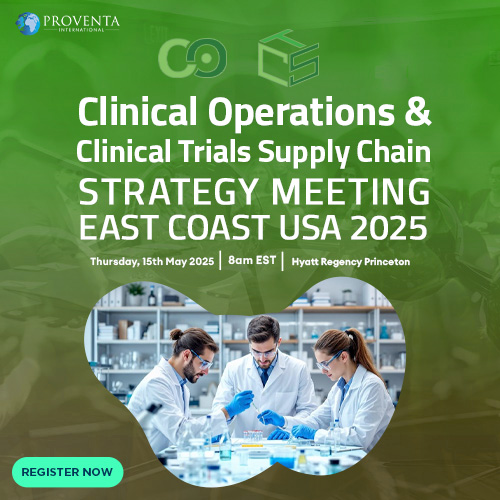No More Silos: Integrating Science and Supply
In a pharmaceutical landscape transformed by pandemics and personalized medicine, the walls between lab research, clinical trials, and logistics are coming down. A decade ago, teams handling Chemistry, Manufacturing, and Controls (CMC) focused on producing compounds after clinical success, while clinical operations (ClinOps) ran trials largely in isolation. Today, these functions increasingly march in lockstep. Drug makers learned hard lessons from recent crises: when a breakthrough therapy emerges, manufacturing capacity and supply chains must be poised in tandem, not playing catch-up months later. The result is a new paradigm of early collaboration—scientists, trial managers, and supply chain strategists huddling together from day one to chart a seamless path from molecule to patient.
Real-world innovation is driving this convergence. Consider how cell and gene therapies have forced companies to co-design their development and supply processes. Unlike traditional chemical drugs made by standardized recipes, these “living” therapies are bespoke products starting from a patient’s own cells or highly specialized biologic ingredients. Life science companies have had to establish entirely new processes and partnerships to manage this make-to-order workflow. A patient’s cells might be collected in a hospital, couriered to a manufacturing facility for genetic modification, and rushed back as a personalized treatment—all on a tight timeline. This level of coordination blurs the old boundaries: manufacturing, clinical care, and distribution become one continuous chain, each link as critical as the next.
Pharmaceutical leaders are embracing these changes with proactive strategies. In development meetings now, it’s not uncommon to see CMC experts, clinical trial designers, and supply chain planners around the same table. They speak of “supply chain–friendly” trial protocols and manufacturing processes that anticipate distribution hurdles from the outset. As one adviser noted, too often the supply chain was “the last cog” thought about in trial design, leading to waste and bottlenecks; emphasizing it earlier makes trials far more robust. Some companies even manufacture at risk – producing doses before a drug is approved – to shave months off launch times if the clinical data comes out positive. The once-linear drug development process is evolving into a simultaneous, interwoven effort, epitomized by initiatives like direct supply input into protocol design and manufacturing scale-up that parallels clinical progress. In short, what was once siloed has become symphonic, with CMC, ClinOps, and the clinical trial supply chain (CTSC) working in concert to speed innovation to patients.
Regulatory Tailwinds and Evolving Rules
Regulators worldwide are rewriting the playbook to accommodate this new, integrated reality. In the United States, the Food and Drug Administration (FDA) has launched programs explicitly to sync up with faster development. One example is the FDA’s CMC Development and Readiness Pilot (CDRP), which invites sponsors of breakthrough therapies to engage in extra early meetings with FDA scientists. The goal is to troubleshoot manufacturing and quality issues in real-time so that chemistry and controls keep pace with compressed clinical timelines. By increasing communication and guidance during development, regulators aim to prevent CMC from becoming a roadblock when a promising drug is on the fast track. It’s a marked shift from the old days of minimal interaction until final submission; today, agencies are often co-navigators on the journey, providing feedback on manufacturing plans or even trial design elements as they unfold.
Beyond pilot programs, formal guidance and international harmonization are clearing obstacles and setting new standards. For example, in 2024 the FDA issued a comprehensive guidance endorsing decentralized clinical trials (more on those shortly), signaling that regulators want industry to innovate on trial conduct. Global bodies like the International Council for Harmonization (ICH) have also stepped up; ICH Q13, finalized in 2023, provides a framework for continuous manufacturing of drugs, encouraging companies to adopt faster, more flexible production techniques without fear of regulatory uncertainty. Meanwhile, in Europe, a sweeping regulation overhauled how clinical trials are approved: as of January 2025, all trials in the EU must be submitted through a single digital portal (the Clinical Trials Information System), replacing a patchwork of national processes. Over 10,000 trials have already been funneled into this centralized system, forcing companies to adapt their operations to a new era of transparency and unified oversight. Such regulatory shifts underscore a common theme – authorities are actively refitting their rules to keep pace with scientific and logistical innovation.
Crucially, these new rules don’t just expedite development; they aim to uphold (and even enhance) safety, quality, and inclusivity. Regulators remain adamant that speed should not compromise rigor. In the realm of cell and gene therapies, for instance, the FDA has scaled up approvals (eight novel cell/gene therapies were greenlit in 2024 alone) but has also reinforced its scrutiny of safety and manufacturing consistency. Likewise, guidance on decentralized trials balances flexibility with data integrity, advising sponsors how to maintain oversight when research extends into patients’ homes. Notably, regulators are also championing diversity and patient-centric design: decentralized and hybrid trials are highlighted as key to reaching underrepresented populations, dovetailing with FDA and industry goals to broaden trial participation. In sum, the regulatory landscape is in flux – in a supportive way. Agencies are not only permitting novel approaches but often actively promoting them through guidelines and global collaborations, ensuring that innovation in CMC, ClinOps, and CTSC marches forward on a foundation of robust standards.
Data and Digital: A New Fabric of Pharma
If there is a glue binding these domains together, it’s digital integration. The pharmaceutical enterprise has become as much about data flows and algorithms as about test tubes and clipboards. On the CMC side, the shift is profound: companies are leveraging cloud-based platforms to handle manufacturing data, creating real-time visibility across development, quality control, and regulatory teams. Instead of static documents, teams share structured data that can populate dossiers or trigger quality checks instantaneously. Artificial intelligence and machine learning are emerging as powerful allies, crunching vast datasets to model manufacturing processes or predict when a production parameter might drift out of spec. This predictive modeling helps firms avoid issues before they happen, optimizing processes and improving product quality. Even the definition of quality assurance is evolving; Real Time Release Testing (RTRT) – the ability to ensure product quality on the fly via in-process sensors and analytics – is becoming a reality. Regulators have formally defined and endorsed RTRT, meaning a batch of biologic medicine might soon be approved for use as it’s being made, thanks to continuous monitoring of critical attributes. Such digital threads are weaving CMC into a faster, more proactive discipline, where decisions that once took weeks now happen with a click on a dashboard.
Clinical operations are likewise undergoing a digital renaissance. The days of massive paper binders at trial sites are fading, replaced by electronic data capture and AI-assisted trial management. Cutting-edge sponsors are experimenting with AI to tackle some of the most stubborn challenges in trials: slow patient enrollment and data quality. Early efforts show promise – for instance, machine learning models can sift electronic health records to flag potential study candidates in hours rather than months, or predict which trial sites might under-recruit so managers can intervene early. AI is also proving its mettle in ensuring data integrity. In one example, trial monitors have begun using AI to automatically scan medical images from a study, alerting them if, say, an X-ray was taken at the wrong angle or a patient’s identifying information accidentally made it into an image file. By catching such errors immediately, these tools prevent unusable data from derailing analyses down the line. Industry experts caution that we are “at the beginning of the journey” for AI in trials – mindful of issues like algorithmic bias and the need for validation – but there’s growing evidence that with careful use, AI can accelerate timelines and reduce human error. Even mundane aspects of trials, such as managing the avalanche of paperwork or payments to sites, are getting automated solutions to free up human researchers for more critical tasks. Step by step, clinical operations are being transformed from a labor-intensive process to a lean, tech-enabled enterprise where insights can be gleaned in real time and researchers can make data-driven decisions on the fly.
Nowhere is digital integration more visibly revolutionary than in the clinical trial supply chain. Ensuring that the right drug reaches the right patient or trial site at the right time has always been a complex dance – one that digital tech is choreographing anew. Pharmaceutical supply chains now bristle with Internet of Things (IoT) sensors and smart tags, especially for temperature-sensitive biologics. Real-time shipment monitoring has become standard: IoT-enabled devices track a drug shipment’s temperature, humidity, location, and even shocks in transit from factory to clinic. If a refrigerated cancer therapy shipment strays one degree too warm, an AI-driven system can instantaneously flag the anomaly and dispatch an alert to a logistics team. In many cases, the system can trigger contingency actions automatically – for example, switching a package to an alternate cooling unit or rerouting it to avoid a customs delay. A recent industry survey found that 69% of pharma companies have implemented automated, AI-driven alerts to monitor their cold chain in real time. The payoff is tangible: these digital safeguards allow for proactive intervention before a problem ruins a batch, protecting patients and averting costly waste. Beyond monitoring, digital tools help forecast and manage supply needs with unprecedented accuracy. Advanced analytics crunch through prescription trends and epidemiological data to predict where demand will spike, enabling companies to position inventory smartly and avoid shortages. The pharma supply chain, once viewed as a back-end utility, is becoming a tech-rich, strategic asset – an intelligent network that not only responds to the present state of the world but anticipates the future. Together, these digital integrations across CMC, ClinOps, and CTSC create a kind of central nervous system for drug development, transmitting signals and feedback instantly, so that the entire organism (from R&D to delivery) can adapt, optimize, and thrive.
Trials Without Borders: Decentralization Takes Hold
Few trends illustrate the new ethos of patient-centric, flexible operations better than the rise of decentralized clinical trials. In a decentralized trial, some or all trial activities occur away from the traditional research sites – whether at participants’ homes, local healthcare providers, or via telemedicine. This model flips the old script: instead of making patients travel regularly to academic hospitals, the trial comes to the patient. Though elements of decentralization (like home nursing visits or telehealth check-ins) have been used in trials for years, the concept coalesced and gained momentum around the COVID-19 pandemic. The FDA has since thrown its weight behind decentralized trials; in September 2024, it issued a final guidance explicitly supporting trials with decentralized elements and spelling out best practices for sponsors and investigators. In regulators’ eyes, decentralized trials are not a radical experiment anymore but an increasingly standard approach to be encouraged when appropriate. The appeal is clear: a well-designed decentralized trial can enhance participant convenience and access, potentially improving both the patient experience and the scientific outcome. By reducing the need for participants to travel, these trials can reach people who otherwise wouldn’t enroll – a critical factor in studying diverse populations and diseases spread over wide geographies.
The impact of decentralized trial strategies is already evident in real-world metrics. In industry surveys, more than half of biopharma organizations report ramping up use of decentralized or hybrid trials in the wake of COVID-19. Those who have adopted these models aren’t looking back: respondents projected a further 24% increase in decentralized trial use over the next two years. And for good reason – early data suggests meaningful improvements in trial performance. A recent analysis by Mayo Clinic found that trials using decentralized and hybrid designs achieved enrollment rates 1.3 to 2 times faster than traditional site-bound trials and retained participants at a 90% higher rate. Faster enrollment and lower dropout rates address two perennial pain points that can delay or derail drug development. Patients, too, have voiced enthusiasm for the convenience of these models: in one study of cancer patients and survivors, 80% said they were open to remote interventions, and 77% indicated they’d be more likely to join a trial if it were as easy to access as their routine care. Such findings dispel the notion that patients prefer the old ways; many people juggling illnesses with jobs, family, or distance barriers welcome the flexibility that lets them participate from home. In sum, decentralized trial approaches are proving to not just be a concession to pandemic logistics, but a bona fide enhancement to how we conduct research – speeding recruitment, broadening inclusion, and keeping volunteers engaged through the long haul of a study.
Yet, for all the promise, executing decentralized trials well requires rethinking operations and overcoming new challenges. Managing a study that might have 100 patients in 100 different locations is inherently more complex than managing 100 patients at a single site. Sponsors must stitch together a patchwork of digital tools for things like e-consent, remote data capture, and telehealth visits, and ensure these systems talk to each other securely. It’s a far cry from the one-size-fits-all technology approach; each protocol demands a tailored mix of decentralized elements that make sense for its patient population and endpoints. Ensuring data quality and regulatory compliance across distributed settings is paramount. The FDA’s guidance emphasizes detailed planning in trial protocols – for example, specifying which visits will be remote versus in-person, and how to maintain data integrity when assessments are done outside the clinic. Drug supply logistics also become more intricate: instead of bulk shipping an investigational drug to a dozen sites, companies may need to deliver individual doses to patients’ doorsteps or local pharmacies on precise schedules. This calls for tight coordination with couriers, contingency plans for delays, and clear instructions to patients on storage and handling of medicines at home. The industry is addressing these hurdles through collaboration and shared learning. The Decentralized Trials & Research Alliance (DTRA), a consortium of over 100 organizations, has been working on best practices to standardize and simplify decentralized trial conduct. At DTRA’s 2024 annual meeting, even regulators joined to reassure sponsors that they are on board. In one striking moment, a representative from the FDA’s inspection branch told the audience: “Don’t be afraid, you need to try these things; we want patients to have access”. Hearing an inspector essentially encourage experimentation in trial design was, as one attendee put it, a “stunning” confirmation that the old guard is shedding its caution. The takeaway is that decentralized trials are here to stay – and through ongoing innovation in both technology and operations, stakeholders are steadily chipping away at the challenges to realize decentralized trials’ full potential.
Advanced Manufacturing for Complex Therapeutics
Behind the scenes of this clinical revolution, a quieter but equally profound transformation is happening on the factory floor. As the pipeline fills with complex therapeutics like biologics, gene therapies, and cell therapies, manufacturing is being reinvented to handle products far removed from the conventional pills of the past. The numbers speak volumes: the cell and gene therapy market is projected to grow at an astonishing 45% compound annual rate, reaching an estimated $76 billion by 2030. This explosion is driven by breakthrough treatments – customized cancer-fighting cells, gene fixes for rare diseases, mRNA vaccines – that hold huge promise but are notoriously difficult to produce and deliver. Traditional pharma manufacturing thrived on scale and uniformity, churning out millions of identical tablets. By contrast, many advanced therapeutics are produced in tiny batches or even one patient at a time, and they often involve living cells or delicate biological molecules that defy one-size-fits-all processes. The shift to precision medicine has, in effect, made manufacturing an extension of the clinical process itself. For example, when a patient’s T-cells are engineered into a CAR-T cancer therapy, the “manufacturing” begins with the patient’s blood draw. Drug production and clinical care are entwined – a reality that forces CMC organizations to innovate like never before.
The challenges in this new manufacturing landscape are immense, prompting creative solutions across industry. Take cell and gene therapies: these products are highly sensitive to time and environment. Many have extremely short shelf-lives or require ultra-cold storage at temperatures cold enough to freeze human cells in suspended animation. Every step – from the operating room where cells are harvested, to the laboratory where they’re modified, to the infusion back into the patient – must be choreographed with precision. A delay in shipping or a lapse in refrigeration can destroy a therapy that took weeks to craft. This makes supply chain integrity a matter of life and death: companies must maintain an unbroken “chain of identity” so that each patient’s cells are tracked and matched correctly throughout the process, and a “chain of custody” with rigorous documentation at every handoff. The manufacturing process itself often has more in common with an artisanal practice than an assembly line – small batches, high variability, and intensive quality oversight. To meet regulatory standards, every bespoke lot of therapy must be tested and verified, pushing quality control to its limits. And because these treatments are so novel, CMC teams frequently face a dearth of established know-how or off-the-shelf equipment. They must engineer new production methods on the fly, all while ensuring that scaling up won’t compromise safety or efficacy. In this sense, advanced therapeutics have turned manufacturing and supply into a frontier as cutting-edge as the science of the drugs themselves. The companies that succeed are those that treat manufacturing not as an afterthought, but as a core part of the innovation – designing for manufacturability and for supply chain just as much as for clinical performance.
In response, the pharma industry is deploying some of the most sophisticated technologies and partnerships ever seen in manufacturing. One major trend is automation and “factory-of-the-future” platforms. A striking example came in 2024, when Bristol Myers Squibb (BMS) announced a $380 million partnership with a biotech engineering firm, Cellares, to revolutionize its CAR-T cell therapy production. BMS will harness Cellares’ fully automated manufacturing platform – essentially a robotic “Cell Shuttle” – to produce cell therapies in high-throughput, with multiple units planned across the U.S., Europe, and Asia. By automating what has traditionally been a manual, labor-intensive process, this collaboration aims to slash production times and costs. Company officials noted that integrating these next-generation systems gives them the agility and scalability to meet surging demand, potentially improving turnaround time so patients get treatments faster. Another avenue of innovation is the pursuit of allogeneic cell therapies – “off-the-shelf” products that use donor cells or universal cell lines, rather than each patient’s own cells. Unlike autologous CAR-T treatments that require a bespoke batch for every individual, allogeneic therapies could be manufactured in large lots and stored until needed, much like conventional drugs. Companies worldwide are investing in this approach, which could transform cell therapy into a readily available medicine instead of a custom craft. Meanwhile, for biologics (like monoclonal antibodies or RNA vaccines), manufacturers are adopting continuous production techniques. Continuous manufacturing replaces the stop-and-start batch operations with a flow where input materials steadily go in and finished product comes out, monitored by advanced sensors. Regulators have now provided clear guidance on continuous processes, and firms are reporting success implementing them even for complex protein drugs. The benefit is not only efficiency – making drugs faster and with fewer shutdowns – but also consistency, as the process can self-correct in real time to maintain quality. In short, whether through automation, new production cell lines, or reimagined workflows, advanced manufacturing is rising to the challenge of complex therapeutics. The line between laboratory breakthrough and manufacturable product is growing thinner, as engineers work hand-in-hand with scientists to ensure that a brilliant therapy can actually be made reliably at scale. It’s an era in which bioreactors, gene-editing rigs, and microfluidic chips are as crucial to patient outcomes as the drugs themselves, and where the mantra is clear: innovate not only in the drug, but in how you deliver the drug to the world.
The Power of Collaboration in a Global Ecosystem
Underpinning all these advances is an unprecedented level of collaboration—across companies, across continents, and across sectors. In the past, pharmaceutical giants tended to guard their turf, handling R&D and production largely in-house. Now, even the largest players recognize that partnerships can dramatically accelerate progress and build resilience. One form of collaboration is the strategic manufacturing alliance. A notable case occurred in 2023 when Pfizer struck a deal with South Korea’s Samsung Biologics to help produce Pfizer’s biologic medicines. By tapping into Samsung’s state-of-the-art facilities (including a brand-new “Plant 4” manufacturing site), Pfizer effectively expanded its global manufacturing footprint without having to build from scratch. Executives hailed this as a win-win: Pfizer gains surge capacity and technical expertise for its products, while Samsung secures a reliable long-term partnership. The end goal is greater access to medicines worldwide, as underscored by Pfizer’s head of global supply, who noted the collaboration will “enable greater access to medicines for more patients across the world”. Such partnerships have become common, especially in biologics and vaccines, where a single company might rely on a network of contract manufacturers spread across different countries to mitigate risk. During the COVID-19 vaccine rollout, we saw how global manufacturing alliances (Pfizer with BioNTech and multiple manufacturing sites, AstraZeneca with dozens of partners, etc.) were crucial to producing billions of doses in record time. The industry is carrying those lessons forward: building redundancy and flexibility into supply chains through collaboration, so that a disruption in one region (be it a factory issue or geopolitical event) doesn’t halt the delivery of critical therapies.
Collaboration isn’t limited to manufacturing; it pervades clinical operations and even the interface with regulators. Companies that usually compete are finding common ground to solve systemic challenges. For example, more than 30 biopharma organizations came together to form the PACT consortium (Partnership for Accelerating Clinical Trials) aimed at sharing data and best practices for decentralized trials. In its first year, PACT members pooled data on 60 trials that used remote and digital elements, jointly analyzing what worked and what didn’t. This kind of pre-competitive collaboration allows the whole industry to learn faster, establishing evidence-based standards for things like virtual patient monitoring or home medication delivery. Another consortium, TransCelerate BioPharma, has been working for years on streamlining trial operations—developing common protocols, data standards, and even platforms for investigator training that all member companies can use. By sharing the burden of these “public goods,” firms free up resources to differentiate where it truly matters: in the drugs they’re developing. Public-private partnerships are also playing a role. In the UK, for instance, the government-backed Cell and Gene Therapy Catapult has fostered an ecosystem to advance manufacturing innovation. Thanks to these efforts, the UK went from having 2 licensed advanced therapy manufacturing facilities in 2013 to 32 facilities by 2024, with dozens of companies collaborating in a shared infrastructure. Each new facility—like a dedicated CAR-T production center opened by biotech firm Autolus—was the fruit of collaboration between industry stakeholders and public investment. The rationale is simple: no single company (or country) can single-handedly create the capacity and standards needed for the therapies of the future. By working in concert, sharing knowledge, and co-investing in capabilities, the whole system becomes stronger and more efficient.
As the pharmaceutical and biotech industries navigate this era of breathtaking innovation, the interconnected nature of CMC, ClinOps, and CTSC stands out as a defining feature. Bringing a cutting-edge therapy from idea to reality is no longer a relay race with siloed hand-offs, but a synchronized effort where chemistry, clinical strategy, and logistics run in parallel. The story of a modern drug’s development might involve a researcher in Boston, a clinical trial in Barcelona, a manufacturing run in Singapore, and a cold-chain delivery to São Paulo – all orchestrated under a unified plan. This demands trust, transparency, and often, letting go of old rivalries in favor of collective progress. Yet the reward is clear: when these once-disparate pieces work together, miracles happen faster. A vaccine gets to billions in a year rather than a decade; a gene therapy reaches a patient while their disease is still early enough to treat; a promising cancer drug hits the global market while its clinical trial data is still fresh and relevant. Efficiency and safety, often seen as trade-offs, become complementary – efficient development means earlier identification of risks and more time to ensure quality before scale-up. One might even say that the pharmaceutical world is undergoing its own “industrial revolution,” but this time it’s not powered by steam or electricity, but by collaboration and integration. The chemist, the clinician, and the supply chain manager are now co-authors of the same story. And that story’s hero is the patient waiting at the end of the line, who stands to receive the fruits of modern therapeutics more swiftly and securely than ever before. In weaving together science, operations, and global strategy, the industry is not just changing how drugs are made – it’s redefining how hope is delivered.
Engr. Dex Marco Tiu Guibelondo, B.Sc. Pharm, R.Ph., B.Sc. CpE
Editor-in-Chief, PharmaFEATURES

Subscribe
to get our
LATEST NEWS
Related Posts

Leadership, Trends & Investments
Where Strategy Meets Science: Inside Proventa International’s Life Science Roundtables
Proventa International’s expert curation of strategy meetings is quietly shaping the future of biotech and pharma, one roundtable at a time.

Leadership, Trends & Investments
Chemists, Code, and Cures: The New Era of Drug Discovery
The Evolving Landscape of Drug Discovery In a gleaming pharmaceutical lab in 2025, a medicinal chemist might spend the morning reviewing molecular designs suggested by an artificial intelligence and the afternoon discussing genetic screen results with a biologist. The search for new medicines has evolved into a high-tech endeavor that would have seemed like science […]
Read More Articles
Myosin’s Molecular Toggle: How Dimerization of the Globular Tail Domain Controls the Motor Function of Myo5a
Myo5a exists in either an inhibited, triangulated rest or an extended, motile activation, each conformation dictated by the interplay between the GTD and its surroundings.













